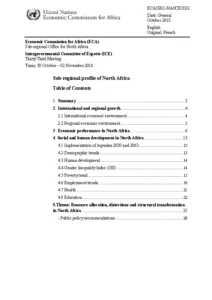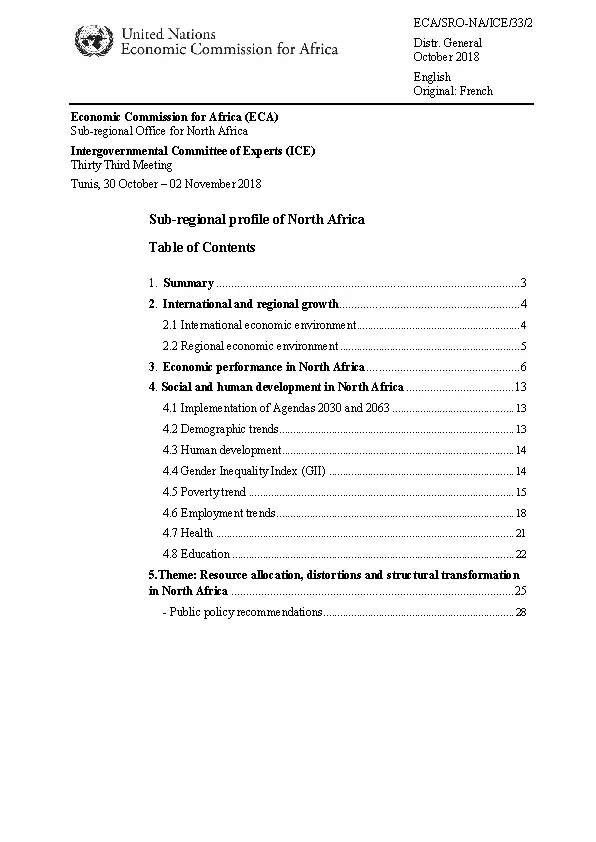Economic growth in North Africa remains volatile due to the reliance of the sub-region’s economies on primary resources (agriculture, mining). Following a 2.9% increase in 2016, real GDP grew by 4.8% in 2017, despite a slowdown in growth in Algeria. The increase is partly due to more favorable weather conditions in Morocco (+4.1% GDP growth, up from 1.6% in 2016), and a significant increase in oil production in Libya. Inflation remains high in the sub-region, standing at 15.9% in 2017, up from 9.8% in 2016. This increase is due to exchange rate depreciations (Egypt, Sudan and Tunisia) and reductions in subsidies (Egypt, Libya). The limited diversification of North African economies has an impact on the volatility of public finances and the current account balance. Thanks to the increase in oil prices, the sub-region's budget deficit dropped to -8.9% of GDP in 2017, down from -11.2% in 2016. The current account deficit decreased from -9.7% of GDP in 2016 to -5.9% in 2017. The Algerian economy significantly benefited from the increase in oil prices (-6.6% deficit, compared to -16.6% in 2016) just like the Libyan economy (2.2% surplus compared to a -48.1% deficit in 2016).


